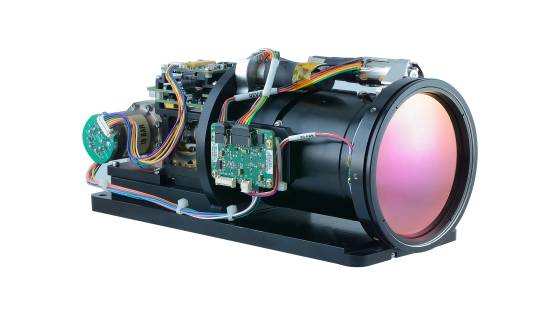Because of the harsh environment and the random killing of human beings, all kinds of wild animals are faced with various survival threats. Every day, many organisms disappear from the earth. Their disappearance means that the biodiversity of the earth is destroyed. Will let the entire ecological balance be affected, with incalculable consequences. Therefore, we must protect these wild animals and maintain the ecological balance of the whole earth. Wildlife is widely distributed, it is very difficult to protect them, especially at night, the line of sight will be affected, the difficulty will be greater. In recent years, with the general application of infrared thermal imaging technology, infrared thermal imager has been gradually applied to animal detection.
The infrared thermal imager is an infrared image with band temperature by receiving the infrared ray from the target object. It can be clearly imaged even in the dark environment. This also has certain requirements for emissivity.
Emissivity refers to the ratio of the energy emitted from the surface of an object to the blackbody radiation energy at the same temperature. The emissivity of various substances is determined by the material of the object itself. At the same temperature, the matter is different and the energy of outward radiation is different.
Emissivity is one of the important parameters affecting the detection accuracy of infrared thermal imager. Because each target is different, the emissivity will be very different. If the emissivity can not be set accurately or the correct way to judge the temperature is found, it will cause serious measurement error.

What are the factors that affect the emissivity of infrared thermal imager?
we divided the detected target into two parts: non-metal and metal material. most non-metallic material (such as plastic, paint, leather, paper, etc.) emissivity can be set to 0.95. the same material, different color target has very close emissivity, the error usually does not exceed the range of measurement accuracy; part of the surface bright non-metallic material emissivity is low (such as tile, glass, etc.), these materials need to refer to the back page content for emissivity confirmation. emissivity of metallic materials is affected by ∶ following factors
Different materials have different emissivity —— materials, such as copper, which is generally higher than aluminum. Surface finish —— usually rough surface material emissivity is higher than smooth surface.
Surface geometry-hollow, angled and porous, surface multiple reflection and so on have high emissivity, the surface has depression, angle or uneven regular parts than the flat part emissivity, such as we usually detect the mold heating, found that the temperature is on the high side, but in fact, the mold temperature is uniform, The high position is often an irregular part of the surface. A measurement angle ——0-55 degrees is the best measurement angle
The surface color —— the visual color do not affect the emissivity, however, the color will affect the absorption of visible light, a black car in the sun will be hotter than the yellow car some wavelength and temperature —— have an effect but not much
The target of detection is divided into two parts: non-metallic and metal material. The emissivity of most non-metallic materials (such as plastic, paint, leather, paper, etc.) can be set to 0.95. The emissivity of the same material and different colors is very close, and the error usually does not exceed the range of measurement accuracy. The emissivity of some bright non-metallic materials (such as ceramic tiles, glass, etc.) is low, which needs to be confirmed by reference emissivity, and the emissivity of metal materials will be affected by material, surface finish, surface geometry, measurement angle, surface color. These factors should be taken into account when using thermal imager.
ZIP Technology brings you a high speed, high definition, dual thermal camera system solutions, ensuring maximum security and surveillance in many different scenarios.
Attn: Cynthia Hsu
Mobile/WhatsApp: +86 18502742430